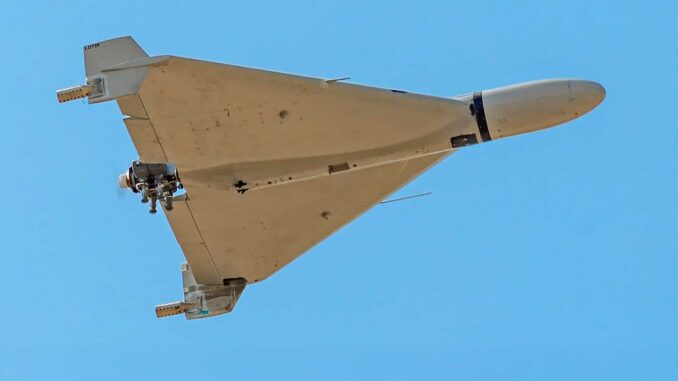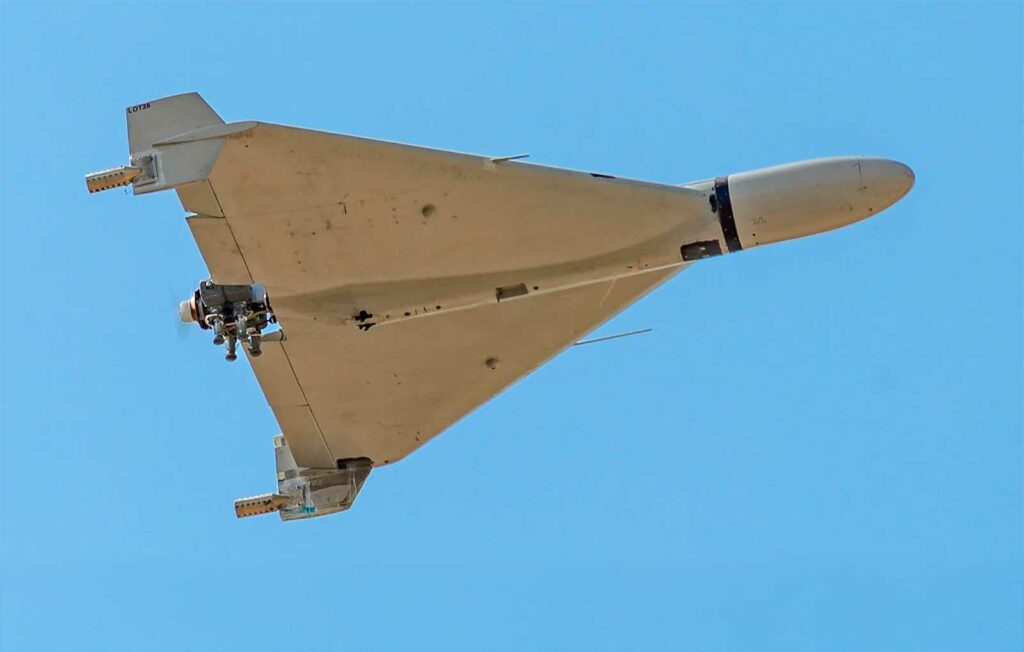
A general from the 25th Infantry Division is calling for long-range, low-cost kamikaze drones, inspired by the Shahed, to overwhelm and stretch enemy defenses.
Summary
The commander of the 25th Infantry Division, based in Hawaii, is calling for the U.S. Army to acquire long-range loitering munitions, similar to the Shahed-136, capable of reaching targets over 1,000 km away and being produced in large volumes. These simple and inexpensive drones offer a favorable cost/effect ratio compared to expensive defense systems. The tactical objective is saturation: to wear down defense stocks, reveal enemy sensors, and open windows for precision strikes. Technically, the recipe combines piston engines, GNSS/INS guidance, and standardized airframes; the major challenges are resilience to jamming, component robustness, and industrial-scale production logistics. The debate focuses on the doctrine of use, the industrialization cycle, and rapidly evolving adversarial countermeasures.
The operational context and position
The commander of the 25th Infantry Division recently stated that the US Army “absolutely needs” a one-way, long-range strike vector, inspired by Russia’s use of Shaheds in Ukraine. This request is part of a strategy to prepare for the Indo-Pacific theater, where the distances between bases and targets are sometimes very great and where the adversary has dense defensive layers. The main lesson learned from the Ukrainian conflict is simple: inexpensive munitions, launched in series, can force the adversary to mobilize disproportionate resources to defend against them.
The Shahed-136 drone: technical characteristics and operational capabilities
The Shahed-136—designated Geran-2 in Russian service—is a loitering munition of relatively rudimentary design: approximately 3.5 m long, 2.5 m wingspan, weight around 200–240 kg, and an estimated explosive payload of 30–50 kg depending on the version. It is powered by a piston engine driving a pusher propeller, which optimizes fuel consumption and cost but limits speed (≈ 180 km/h). Estimates of its range vary widely: profiles report 1,000 to 2,000 km depending on the version and fuel load. Guidance generally combines GNSS and INS with pre-programmed trajectories and, for some modernized variants, terminal sensors or equipment for improved lock-on. These characteristics explain why this ammunition is in high demand: it offers a relatively low unit cost for a significant strategic effect.
Doctrine of use: saturation, deep strike, and harassment
The main strength of this ammunition lies in its mass and repetition. Used in waves, it can cause saturation of enemy air defenses, forcing the expenditure of costly ammunition and the revelation of radar positions. In deep strikes, its range allows it to reach logistics depots, electrical nodes, radar stations, and command infrastructure. In harassment mode, regular salvos disrupt maintenance and enemy logistical resilience. This paradigm does not exclude the combined use of precision munitions: the idea is to use cheap munitions to open windows, then strike with more expensive systems on high-value targets.
The US industrial posture: programs and identified gaps
The United States has initiated industrial responses: the Replicator program and the public purchase of the Switchblade-600 demonstrate a willingness to industrialize loitering munitions and drone swarms. However, these systems remain primarily oriented toward limited tactical or operational ranges; the gap identified by several officials is the lack of a long-range, very low-cost capability comparable to the Shahed-type, produced in the thousands. The industrial challenge involves securing a supply chain capable of manufacturing cells, engines, flight controls, and payloads in volume and at a compressed price.
Key technology: navigation, guidance, and electronic immunity
To maintain long-range effectiveness, GNSS immunity (anti-jamming) must be improved, higher-quality INS must be deployed, and alternative modes (image-to-image mapping, altimetry, ground corrections) must be integrated. Simple terminal guidance is often sufficient, but the addition of inexpensive EO/IR sensors increases the probability of effect without multiplying costs. Piston engines limit costs but expose the aircraft to acoustic signatures; faster engines (turbines) would improve survivability at the cost of much higher unit prices. The technical equation is therefore a triple compromise between cost, range, and resilience to jamming.
The economics of attrition: cost per effect and production rate
The strategic reasoning is economic: spending $50,000–100,000 on ammunition designed to neutralize or divert an interceptor valued at several hundred thousand or even a million dollars reverses the economic balance of defense. Achieving this goal requires massive purchases, multi-year contracts, and a pace of industrialization that allows for the production of thousands of units. The Pentagon has already budgeted several hundred million dollars per year for Replicator; translating this effort into low-cost long-range munitions will require multiple suppliers and rapid iteration testing.
Tactical limitations and adversarial countermeasures
Despite their strengths, these drones remain vulnerable: modest speed, detectable acoustic signature, sensitivity to GNSS jamming, and exposure to small arms fire, anti-aircraft guns, and interceptors. Adversary responses include improved low-frequency radars, deployment of drone destroyers, use of autonomous anti-drones, and electronic warfare measures. The necessary tactical adaptation is to multiply trajectories, alternate profiles and payloads, and integrate their use in combined strikes to maximize enemy attrition.

Specific interest for the 25th Infantry Division and the Indo-Pacific
For a division deployed in a dispersed archipelagic space, long-range, low-cost munitions become an extended arm from small bases, islands, or auxiliary ships. It allows distant targets to be struck, forces the enemy’s defenses to disperse, and supports the implementation of an adversary’s A2/AD posture. The question of the level of deployment remains key: these capabilities require specialized units and dedicated logistics so as not to overload maneuver units.
Prospects and strategic choices
Budget signals point to a trajectory toward a mixed portfolio: tactical loitering munitions (Switchblade), swarm programs (Replicator), and potentially a “low-cost long-range” line inspired by the Shahed-136 but adapted to US standards. The ultimate challenge is to achieve the optimal balance between simplicity, resilience, and production rate, while limiting the risks of escalation and maintaining technological superiority over enemy countermeasures.
The issue is not to imitate a foreign platform through pure mimicry, but to absorb a tactical lesson: low-cost attrition and saturation can become a strategic lever. Industrial and doctrinal safeguards still need to be defined so that this capability strengthens deterrence without trivializing it.
War Wings Daily is an independant magazine.